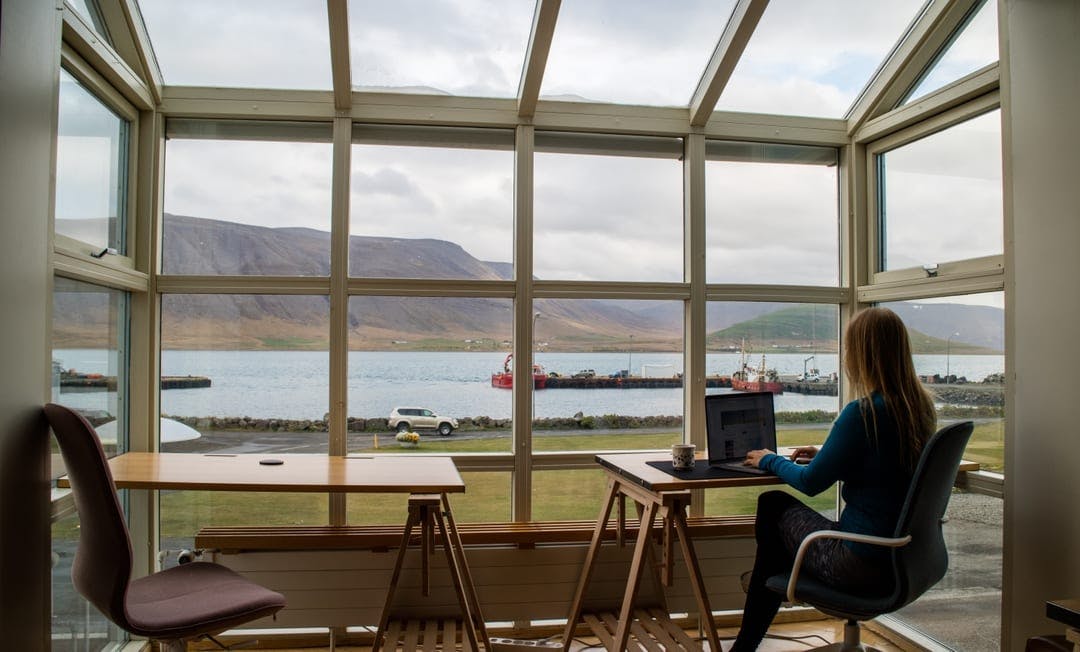Climate change is altering lives around the world. If there was any doubt left about the seriousness of the transformation our planet is going through, the recent heat waves, droughts, and wildfires extinguished that uncertainty.
Climate change is doing more than just changing the temperature of oceans and air. It’s causing millions and possibly even billions to seek new opportunities in different parts of their own country or further afield. Climate change is creating previously unseen moving and migration patterns that will have a lasting effect on global employers. At the same time, some people are still heading to warmer countries for climate change migration.
More Than Just Hot Air: The Real-world Impact of Climate Change on Our Environment
Climate change is wreaking havoc on ecosystems worldwide. Through the lens of growing scientific evidence, as assessed by the United Nations' Intergovernmental Panel on Climate Change (IPCC), we see not just extreme weather events but also irreversible losses. These losses range from retreating glaciers and thawing permafrost to mass mortality events like coral bleaching and drought-induced tree loss.
As sea levels climb, native species retreat to higher ground, and coastal areas face land loss. Furthermore, spikes in extreme weather events like floods and droughts are causing food and water insecurities, impacting both the physical and mental health of affected populations.
From Home to Homeless: The Human Toll of Climate-Triggered Displacement
Natural disasters led to more than 30 million internal displacements in 2022, marking a surge of over 40% compared to the annual average over the past decade. However, there’s a paradox at play: within the United States, a strong trend remains for people to move to warmer—yet hazard-prone—areas. This trend could be categorized as "migration into harm's way." For example, Americans moving to Western states that are prone to wildfires and droughts.
The Hidden Crisis: Understanding the Complex Reality of Environmental Refugees
One in four of the internal displacements in 2022 was due to monsoon flooding in Pakistan. Meanwhile, Somalia’s worst drought in more than 40 years contributed to over a million displacements. Furthermore, in 2020, wildfires compelled more than a million Americans to relocate. These instances demonstrate that such displacements are not isolated events but a growing trend in climate change-induced migration.
It's tempting to think that those displaced by climate change can simply choose a safer location. However, this is often far from the truth. Economic limitations frequently restrict the choices available to those facing displacement, effectively turning them into environmental refugees.
Even for those fortunate enough to have options, choosing a new, "safe" location is complicated. Stanford University climate researchers have noted that families may leave areas prone to wildfires for seemingly safer locations, only to discover their new homes are also at risk. Alternatively, they may find themselves in regions now vulnerable to flooding.
Adding to the dilemma, as natural disasters become more frequent and severe, fewer areas will offer genuine safety. This limits the choices for everyone, regardless of economic means. Ultimately, the increase in environmental refugees and the complexity of their needs signal a societal transformation driven by climate change.
Impacts On Urban and Rural Areas
Researchers at the IPCC have observed that heatwaves in urban areas are often intensified by air pollution. Their effects are felt more strongly by marginalized groups, for example, in informal settlements, who may not have access to infrastructure such as climate-controlled buildings.
Both extreme natural disasters and climate events that developed more slowly have pushed water and energy supplies to their limits, in some cases leading to disruption in services. As they become more frequent and last longer, these disruptions lead to economic losses as well as endangering the health and well-being of affected populations.
Still, most climate migrants move from rural areas to cities after crop failures, extreme droughts, displacement migration, and other climate events destroy their livelihoods or even their homes.
Climate change has been disrupting growth patterns and harvests as so-called climate niches are shifting, writes author Gaia Vince on BBC Future. Climate niches describe the range of conditions in which a species or crop can grow. As these niches shift, crops that used to grow in certain countries, providing sustenance and income to the local population, may no longer be viable.
Crossing Borders: The Evolving Trends in Migration and Immigration Amidst Climate Crisis
The face of global migration and immigration trends is changing dramatically due to climate-induced migration. While crossing international borders, these climate migrants often find themselves in a legal limbo as they don't qualify for the same protections extended to refugees fleeing war or political unrest.
The number of people fleeing climate disasters is set to skyrocket as the impacts of climate change intensify. Estimates show we could see hundreds of millions or even billions of climate refugees by mid-century.
Immigration policies around the world will need a major overhaul to deal with the scale of the crisis headed our way. No country will be immune — climate migration will touch every corner of the map. We're facing a global humanitarian challenge unlike anything before. Coming together to support and resettle countless climate migrants won't be easy, but we have no choice but to try.
Economic Adaptation: The Unseen Potential of Displacement Migration
Internationally, displacement migration resulting from climate-driven factors is often restricted or slowed by state borders. Economists argue that these limitations could be obstructing the full potential of global prosperity. As it stands, 3% of the global population are international migrants, yet their contribution to global GDP is disproportionately high, clocking in at around 10%.
This suggests that those involved in displacement migration are often contributing far more to their adopted countries than they could in their countries of origin. Some analysts believe that enabling freer movement could potentially double global GDP. However, challenges remain, particularly regarding the adaptation of skill sets and the cultural fit within different nations.
How Climate-Induced Migration is Affecting Indigenous Communities
Thawing of permafrost and a loss of marine life has already forced several Native American communities in Alaska to leave their lands. Rising sea levels are currently threatening island nations in the South Pacific who would not be able to migrate within their own country as there simply are no safe places to go.
For those peoples, climate-induced migration comes at the cost of potentially losing their culture as communities are torn apart during resettlement, leaving entire populations vulnerable. The International Organization for Migration (IOM) is working to offer support in these challenging circumstances by developing specific inclusion initiatives.
Conclusion: The Far-Reaching Implications of Displacement from Climate Change
As the frequency of extreme weather events increases, climate change is challenging people around the world. However, some of the most severely affected populations are also suffering from the effects of crime, poverty, and political instability. Therefore, climate-induced migration patterns are no longer restricted to in-country movements. As international climate-related migration continues to grow over the coming decades, politicians and other stakeholders will need to address the cultural, environmental, and political implications of those far-reaching changes caused by displacement from climate change.



